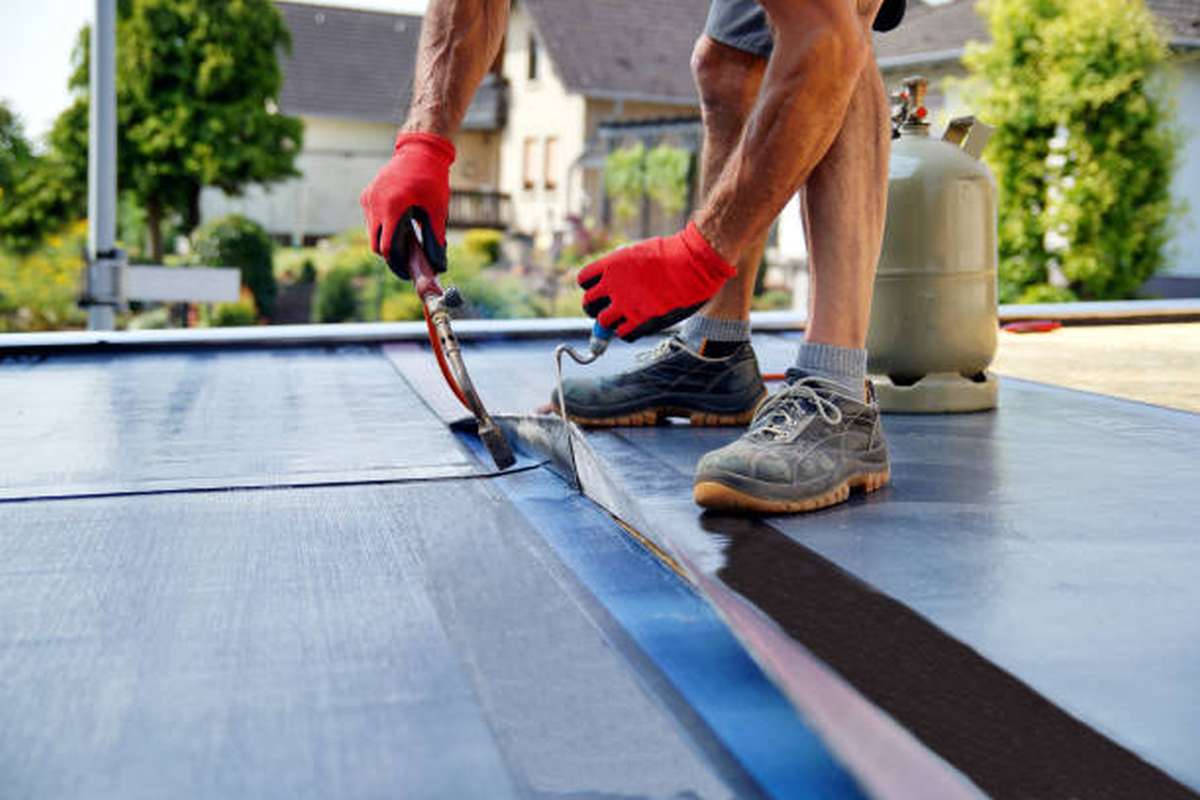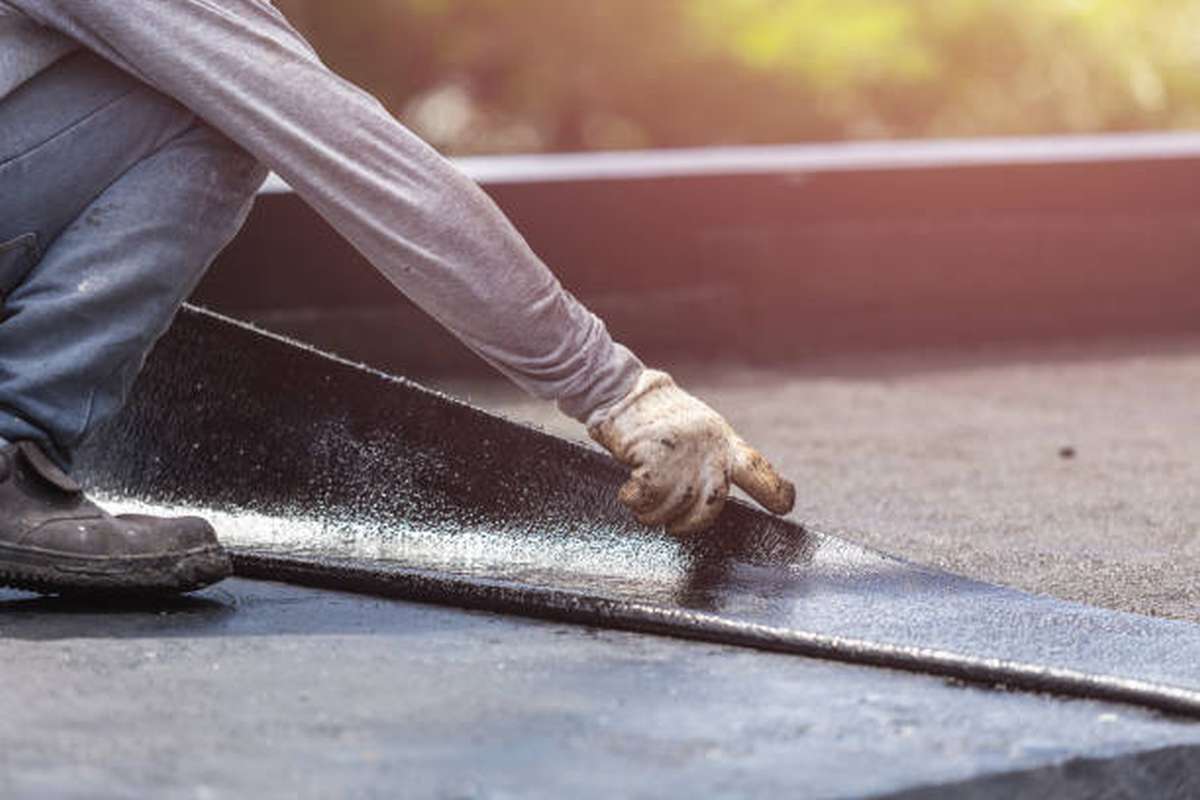Waterproofing is an essential construction and building maintenance process that protects structures from water damage, ensuring their longevity and integrity. It plays a crucial role in preventing moisture ingress, which can cause deterioration, mould growth, and weakening of building materials.
Various waterproofing methods are available, each suitable for different environments, surfaces, and budget considerations. This article will explore the most commonly used waterproofing methods, their advantages, and the areas where they are best applied.
Let’s get straight to the point.
Waterproofing is crucial for protecting buildings from water damage. Different methods, such as cementitious, liquid membrane, bituminous coating, bituminous membrane, polyurethane liquid membrane, and rubberised asphalt, offer various benefits and are suitable for different applications.
Factors to consider when choosing a method include the area of application, type of structure, exposure to elements, and cost. Proper waterproofing ensures buildings’ structural integrity and longevity, so consulting experts and using quality materials is essential.
Six Different Methods Of Waterproofing

1. Cementitious Waterproofing
Cementitious waterproofing is one of the most straightforward methods. It is often used in internal wet areas like toilets and bathrooms.
This technique involves applying a cement-based waterproofing solution that hardens to form a protective barrier.
Advantages of Cementitious Waterproofing
- Easy to apply: The cementitious material is available in powder form, mixed with water, and applied with a brush or roller.
- Cost-effective: The materials are inexpensive and readily available.
- Ideal for wet areas: Commonly used in water treatment plants, bridges, dams, and tunnels due to their water-resistant properties.
Applications
Cementitious waterproofing is ideal for basements, foundations, and below-ground structures where water seepage prevention is crucial.
This method is highly durable but better suited for internal areas since it lacks flexibility and UV resistance.
2. Liquid Waterproofing Membrane
A liquid waterproofing membrane is applied to surfaces and dries to form a seamless, flexible barrier.
Its flexibility makes it more adaptable than cementitious methods, as it can stretch and contract with temperature changes.
Advantages of Liquid Waterproofing Membrane
- Flexible: Once cured, it forms a rubber-like membrane that accommodates movement in the substrate.
- High performance: Provides strong adhesion to various surfaces, ensuring durability.
- Seamless application: No gaps or cracks form in the waterproofing layer, minimising potential points for water ingress.
Applications
Liquid waterproofing membranes are ideal for roofs, terraces, balconies, bathrooms, and decks. Because of their water-repellent properties, they are particularly effective in areas prone to water accumulation.
3. Bituminous Coating Waterproofing
Bituminous coatings, known as asphalt waterproofing, create a thick, black protective layer that acts as a barrier against water.
This material is widely used for both commercial and residential structures.
Advantages of Bituminous Coating
- Durability: Offers excellent resistance to water infiltration, making it suitable for long-term applications.
- Cost-efficient: An economical choice for large areas like foundations and roofs.
- Good adhesion: Bonds effectively to concrete and masonry surfaces, ensuring a secure, watertight seal.
Applications
Bituminous coatings are best used for foundations, basements, and concrete roofs. However, they may require additional UV protection as the material can become brittle when exposed to sunlight over time.
4. Bituminous Membrane Waterproofing
This method utilises bituminous membranes, which are commonly used on low-sloped roofs.
The membranes are either self-adhesive or applied with a torch to provide a watertight seal.
Advantages of Bituminous Membrane
- Flexible and adaptable: Withstands building movements and provides long-lasting waterproofing.
- UV resistance: Some membranes are designed to withstand sun exposure, offering protection against degradation.
- Strong adhesion: Performs well on roofs, decks, and basements.
Applications
Bituminous membrane waterproofing is highly effective for roof waterproofing, particularly in commercial buildings. It is also widely used in sub-grade structures such as basements and underground parking areas.
5. Polyurethane Liquid Membrane
Polyurethane waterproofing is an advanced technique that involves applying a polyurethane liquid membrane.
This method is highly flexible and resistant to weather changes, making it ideal for areas with significant temperature fluctuations. However, it is more expensive than other options.
Advantages of Polyurethane Liquid Membrane
- High flexibility: Adapts to substrate movement without cracking, ensuring a continuous protective layer.
- Durable: Provides long-lasting protection against water penetration, even in extreme weather conditions.
- UV resistant: Well-suited for surfaces exposed to direct sunlight, maintaining its integrity over time.
Applications
Polyurethane membranes are commonly used on flat roofs, balconies, and terraces. Before application, care must be taken to ensure the surface is free from moisture, as this can cause the membrane to peel or detach from the substrate.
6. Rubberised Asphalt Waterproofing
Rubberised asphalt combines asphalt with rubber from recycled tyres, creating a highly durable, flexible material used in various waterproofing applications.
Advantages of Rubberised Asphalt
- Sustainability: Utilises recycled materials, promoting environmentally friendly construction.
- Flexibility: Handles structural movements without cracking or separating.
- Durability: Resistant to water, chemicals, and general wear, offering long-term protection.
Applications
This method suits various uses, including roofing, foundation waterproofing, and pavement resurfacing. Its flexibility and sustainability make it an excellent choice for eco-conscious projects.
Factors To Consider When Choosing A Waterproofing Method
Selecting the right waterproofing method is crucial to ensuring the long-term protection of your structure.
Various factors must be carefully considered to make the best decision, as choosing the wrong method can lead to costly repairs. Below are the key factors to keep in mind:

Area Of Application
Different waterproofing methods are suited to specific areas of a building.
For instance, roofs may require flexible membranes to deal with temperature fluctuations, while basements benefit from rigid or liquid-applied waterproofing systems that create a watertight seal.
Bathrooms and other wet areas within homes typically need waterproofing systems that resist constant moisture and steam.
Type Of Structure
Whether you’re working on a new build or performing repairs can impact your choice of waterproofing.
New constructions often allow more comprehensive systems to be installed during the building process, while existing materials and structures may limit repairs.
Some methods, like liquid-applied membranes, are easier to retrofit onto older buildings without significant disruption.
Exposure To Elements
Areas exposed to extreme weather conditions such as high UV radiation, rainfall, or temperature changes require more durable and robust solutions. Polyurethane membranes are known for resistance to UV light and harsh weather, making them ideal for flat roofs or terraces.
In contrast, bituminous membranes offer excellent waterproofing for foundations and basements but may be less effective when exposed to high temperatures or UV light for extended periods.
Cost
Budget is a key consideration when selecting a waterproofing system. More advanced methods, such as polyurethane waterproofing, provide superior performance, especially in demanding environments, but come at a higher cost.
In contrast, cementitious waterproofing is more affordable and can be used in areas with less exposure to harsh weather, such as indoor spaces like bathrooms. Balancing cost with long-term durability is essential to avoid future expenses from leaks or water damage.
Conclusion
Waterproofing is indispensable to building maintenance, protecting structures from water ingress. Several methods are available, including cementitious coatings, bituminous membranes, and liquid waterproofing.
Choosing the most suitable method depends on the structure’s needs, location, and exposure to weather. Proper waterproofing prevents future repair costs and maintains buildings’ structural integrity, enhancing their lifespan and value. For best results, it is highly recommended that you consult waterproofing experts and use high-quality materials.
FAQs About Waterproofing
What Is The Best Time To Do Waterproofing?
Summer provides the best working conditions for terrace waterproofing and other exterior areas. However, cracks must be fixed, and gaps must be filled before starting the treatment plan.
Which Compound Is Used As A Waterproofing Agent?
The various materials and chemicals used for waterproofing include:
- Polyvinyl chloride.
- Hypalon.
- Ethylene propylene diene monomer (EPDM) rubber.
- Tar paper with asphalt and bituminous materials.
Another aspect of waterproofing is dampproofing.
How Do I Waterproof My Terrace?
If you plan to have a garden on your terrace, you need to have waterproofing done. Waterproofing can be easily done by applying waterproofing polymer coating on concrete slabs/surfaces. However, this coating is applied to concrete once a waterproof silicone polymer coating is done.
How Do You Waterproof A Rooftop Terrace?
The best way to waterproof a flat terrace is to use a waterproofing membrane. This thin layer of waterproof material is continuous and offers no path for water to enter the structure. First, the membrane is laid on top of the structural slab. Then, a filler material is laid on top of the membrane.
What Is The Process Of Waterproofing?
Waterproofing makes an object or structure waterproof or water-resistant so that it remains relatively unaffected by water or resists water ingress under specified conditions. Water vapour permeation through a material or structure is reported as a moisture vapour transmission rate.

